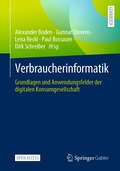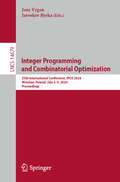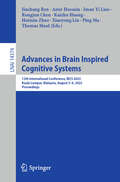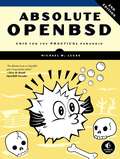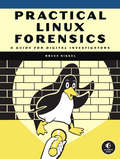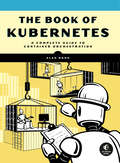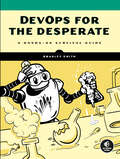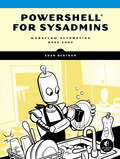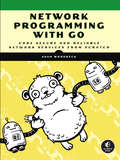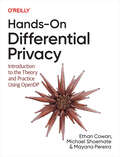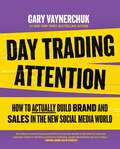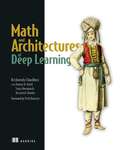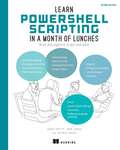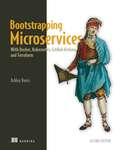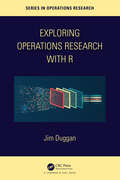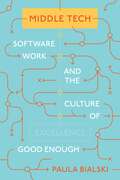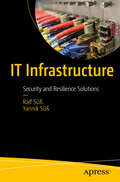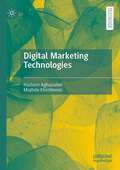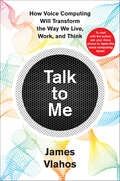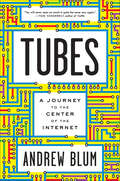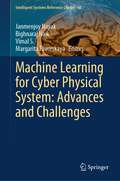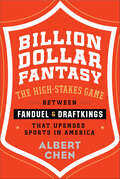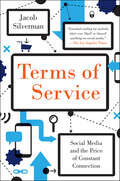- Table View
- List View
Verbraucherinformatik: Grundlagen und Anwendungsfelder der digitalen Konsumgesellschaft
by Alexander Boden Gunnar Stevens Lena Recki Paul Bossauer Dirk SchreiberIn einer Zeit, in der digitale Technologien nahezu jeden Aspekt unseres Lebens durchdringen, ist es unerlässlich, die tieferen Zusammenhänge des digitalen Konsums zu verstehen. Erstmalig bietet dieses open access-Lehrbuch einen Wegweiser durch die vielfältigen Facetten der Digitalisierung des Konsums. Dabei verbindet es die Disziplinen der angewandten Informatik und Verbraucherwissenschaften. Die Leserinnen und Leser erhalten Einblick in die digitale Konsumlandschaft, ausgehend von der historischen Entwicklung des (digitalen) Konsums. Dazu vermittelt das Lehrbuch zentrale Grundbegriffe und Themen der Verbraucherinformatik und stellt verschiedene Konsumtheorien aus den Disziplinen Wirtschaftswissenschaften, Psychologie und Sozialwissenschaften vor. Praxisnahe Beispiele aus der Digitalisierung bieten Einsichten in unterschiedliche Perspektiven, während vertiefende Textboxen und Selbstreflexionsfragen das Verständnis fördern. Inhaltlich decken die Autorinnen und Autoren Themen von Datenschutz bis zur Sharing Economy ab und geben insbesondere auch praktische Ansätze für Themen wie Verbraucherschutz und Nachhaltigkeit mit auf den Weg. Die Anwendungs- und Querschnittsthemen der Verbraucherinformatik reichen von der Digitalisierung der Haushalte und Märkte über Fragen des digitalen Verbraucherschutzes bis hin zu zentralen gesellschaftlichen Fragestellungen rund um die Themen Fairness, Verantwortung und Nachhaltigkeit bei der Gestaltung von digitalen Technologien. Das Buch bietet einen umfassenden Überblick, der sowohl für Studierende der Wirtschafts- und Sozialwissenschaften als auch der angewandten Informatik von bedeutendem Wert ist.
Integer Programming and Combinatorial Optimization: 25th International Conference, IPCO 2024, Wroclaw, Poland, July 3–5, 2024, Proceedings (Lecture Notes in Computer Science #14679)
by Jens Vygen Jarosław ByrkaThis book constitutes the refereed proceedings of the 25th International Conference on Integer Programming and Combinatorial Optimization, IPCO 2024, held in Wrocław, Poland, during July 3–5, 2024. The 33 full papers presented were carefully reviewed and selected from 101 submissions. IPCO is under the auspices of the Mathematical Optimization Society, and it is an important forum for presenting present recent developments in theory, computation, and applications. The scope of IPCO is viewed in a broad sense, to include algorithmic and structural results in integer programming and combinatorial optimization as well as revealing computational studies and novel applications of discrete optimization to practical problems.
Advances in Brain Inspired Cognitive Systems: 13th International Conference, BICS 2023, Kuala Lumpur, Malaysia, August 5–6, 2023, Proceedings (Lecture Notes in Computer Science #14374)
by Jinchang Ren Amir Hussain Iman Yi Liao Rongjun Chen Kaizhu Huang Huimin Zhao Xiaoyong Liu Ping Ma Thomas MaulThis book constitutes the refereed proceedings of the International Conference on Brain Inspired Cognitive Systems, BICS 2023, held in Kuala Lumpur, Malaysia, in August 2023. The 36 full papers included in this book were reviewed and selected from 58 submissions and are organized in thematic sections as follows: Bio-inspired systems and Neural Computation; Image Recognition, Detection and Classification; Vision and Object Tracking; Data Analysis and Machine Learning and Applications.
Absolute OpenBSD, 2nd Edition: Unix for the Practical Paranoid
by Michael W. LucasOpenBSD, the elegant, highly secure Unix-like operating system, is widely used as the basis for critical DNS servers, routers, firewalls, and more. This long-awaited second edition of Absolute OpenBSD maintains author Michael Lucas's trademark straightforward and practical approach that readers have enjoyed for years. You'll learn the intricacies of the platform, the technical details behind certain design decisions, and best practices, with bits of humor sprinkled throughout. This edition has been completely updated for OpenBSD 5.3, including new coverage of OpenBSD's boot system, security features like W^X and ProPolice, and advanced networking techniques.You'll learn how to: –Manage network traffic with VLANs, trunks, IPv6, and the PF packet filter–Make software management quick and effective using the ports and packages system–Give users only the access they need with groups, sudo, and chroots–Configure OpenBSD's secure implementations of SNMP, DHCP, NTP, hardware sensors, and more–Customize the installation and upgrade processes for your network and hardware, or build a custom OpenBSD releaseWhether you're a new user looking for a complete introduction to OpenBSD or an experienced sysadmin looking for a refresher, Absolute OpenBSD, 2nd Edition will give you everything you need to master the intricacies of the world's most secure operating system.
Practical Linux Forensics: A Guide for Digital Investigators
by Bruce NikkelA resource to help forensic investigators locate, analyze, and understand digital evidence found on modern Linux systems after a crime, security incident or cyber attack.Practical Linux Forensics dives into the technical details of analyzing postmortem forensic images of Linux systems which have been misused, abused, or the target of malicious attacks. It helps forensic investigators locate and analyze digital evidence found on Linux desktops, servers, and IoT devices. Throughout the book, you learn how to identify digital artifacts which may be of interest to an investigation, draw logical conclusions, and reconstruct past activity from incidents. You&’ll learn how Linux works from a digital forensics and investigation perspective, and how to interpret evidence from Linux environments. The techniques shown are intended to be independent of the forensic analysis platforms and tools used.Learn how to:Extract evidence from storage devices and analyze partition tables, volume managers, popular Linux filesystems (Ext4, Btrfs, and Xfs), and encryptionInvestigate evidence from Linux logs, including traditional syslog, the systemd journal, kernel and audit logs, and logs from daemons and applicationsReconstruct the Linux startup process, from boot loaders (UEFI and Grub) and kernel initialization, to systemd unit files and targets leading up to a graphical loginPerform analysis of power, temperature, and the physical environment of a Linux machine, and find evidence of sleep, hibernation, shutdowns, reboots, and crashesExamine installed software, including distro installers, package formats, and package management systems from Debian, Fedora, SUSE, Arch, and other distrosPerform analysis of time and Locale settings, internationalization including language and keyboard settings, and geolocation on a Linux systemReconstruct user login sessions (shell, X11 and Wayland), desktops (Gnome, KDE, and others) and analyze keyrings, wallets, trash cans, clipboards, thumbnails, recent files and other desktop artifactsAnalyze network configuration, including interfaces, addresses, network managers, DNS, wireless artifacts (Wi-Fi, Bluetooth, WWAN), VPNs (including WireGuard), firewalls, and proxy settingsIdentify traces of attached peripheral devices (PCI, USB, Thunderbolt, Bluetooth) including external storage, cameras, and mobiles, and reconstruct printing and scanning activity
The Book of Kubernetes: A Comprehensive Guide to Container Orchestration
by Alan HohnThis hands-on guidebook to the inner workings of containers peels back the layers to provide a deep understanding of what a container is, how containerization changes the way programs run, and how Kubernetes provides computing, networking, and storage.Containers ensure that software runs reliably no matter where it&’s deployed, and Kubernetes lets you manage all of your containers from a single control plane. In this comprehensive tour of the open-source platform, each chapter includes a set of example scripts with just enough automation to start your container exploration with ease. Beginning with an overview of modern architecture and the benefits of orchestration, you'll quickly learn how to create containers; how to deploy, administer and debug Kubernetes clusters all the way down to the OS; and how container networking works at the packet level across multiple nodes in a cluster.
DevOps for the Desperate: A Hands-On Survival Guide
by Bradley SmithDevOps for the Desperate is a hands-on, no-nonsense guide for those who land in a DevOps environment and need to get up and running quickly.This book introduces fundamental concepts software developers need to know to flourish in a modern DevOps environment including infrastructure as code, configuration management, security, containerization and orchestration, monitoring and alerting, and troubleshooting. Readers will follow along with hands-on examples to learn how to tackle common DevOps tasks. The book begins with an exploration of DevOps concepts using Vagrant and Ansible to build systems with repeatable and predictable states, including configuring a host with user-based security. Next up is a crash course on containerization, orchestration, and delivery using Docker, Kubernetes, and a CI/CDpipeline. The book concludes with a primer in monitoring and alerting with tips for troubleshootingcommon host and application issues. You'll learn how to:Use Ansible to manage users and groups, and enforce complex passwordsCreate a security policy for administrative permissions, and automate a host-based firewallGet started with Docker to containerize applications, use Kubernetes for orchestration, and deploycode using a CI/CD pipelineBuild a monitoring stack, investigate common metric patterns, and trigger alertsTroubleshoot and analyze common issues and errors found on hosts
PowerShell for Sysadmins: Workflow Automation Made Easy
by Adam BertramLearn to use PowerShell, Microsoft's scripting language, to automate real-world tasks that IT professionals and system administrators deal with every day.Save Time. Automate.PowerShell® is both a scripting language and an administrative shell that lets you control and automate nearly every aspect of IT. In PowerShell for Sysadmins, five-time Microsoft® MVP "Adam the Automator" Bertram shows you how to use PowerShell to manage and automate your desktop and server environments so that you can head out for an early lunch.You'll learn how to:Combine commands, control flow, handle errors, write scripts, run scripts remotely, and test scripts with the PowerShell testing framework, PesterParse structured data like XML and JSON, work with common domains (like Active Directory, Azure, and Amazon Web Services), and create a real-world server inventory scriptDesign and build a PowerShell module to demonstrate PowerShell isn't just about ad-hoc scriptsUse PowerShell to create a hands-off, completely automated Windows deploymentBuild an entire Active Directory forest from nothing but a Hyper-V host and a few ISO filesCreate endless Web and SQL servers with just a few lines of code!Real-world examples throughout help bridge the gap between theory and actual system, and the author's anecdotes keep things lively.Stop with the expensive software and fancy consultants. Learn how to manage your own environment with PowerShell for Sysadmins and make everyone happy.Covers Windows PowerShell v5.1
Network Programming with Go: Code Secure and Reliable Network Services from Scratch
by Adam WoodbeckNetwork Programming with Go teaches you how to write clean, secure network software with the programming language designed to make it seem easy.Build simple, reliable, network software Combining the best parts of many other programming languages, Go is fast, scalable, and designed for high-performance networking and multiprocessing. In other words, it&’s perfect for network programming. Network Programming with Go will help you leverage Go to write secure, readable, production-ready network code. In the early chapters, you&’ll learn the basics of networking and traffic routing. Then you&’ll put that knowledge to use as the book guides you through writing programs that communicate using TCP, UDP, and Unix sockets to ensure reliable data transmission. As you progress, you&’ll explore higher-level network protocols like HTTP and HTTP/2 and build applications that securely interact with servers, clients, and APIs over a network using TLS. You'll also learn:Internet Protocol basics, such as the structure of IPv4 and IPv6, multicasting, DNS, and network address translationMethods of ensuring reliability in socket-level communicationsWays to use handlers, middleware, and multiplexers to build capable HTTP applications with minimal codeTools for incorporating authentication and encryption into your applications using TLSMethods to serialize data for storage or transmission in Go-friendly formats like JSON, Gob, XML, and protocol buffersWays of instrumenting your code to provide metrics about requests, errors, and moreApproaches for setting up your application to run in the cloud (and reasons why you might want to) Network Programming with Go is all you&’ll need to take advantage of Go&’s built-in concurrency, rapid compiling, and rich standard library. Covers Go 1.15 (Backward compatible with Go 1.12 and higher)
Hands-On Differential Privacy
by Ethan Cowan Michael Shoemate Mayana PereiraMany organizations today analyze and share large, sensitive datasets about individuals. Whether these datasets cover healthcare details, financial records, or exam scores, it's become more difficult for organizations to protect an individual's information through deidentification, anonymization, and other traditional statistical disclosure limitation techniques. This practical book explains how differential privacy (DP) can help.Authors Ethan Cowan, Michael Shoemate, and Mayana Pereira explain how these techniques enable data scientists, researchers, and programmers to run statistical analyses that hide the contribution of any single individual. You'll dive into basic DP concepts and understand how to use open source tools to create differentially private statistics, explore how to assess the utility/privacy trade-offs, and learn how to integrate differential privacy into workflows.With this book, you'll learn:How DP guarantees privacy when other data anonymization methods don'tWhat preserving individual privacy in a dataset entailsHow to apply DP in several real-world scenarios and datasetsPotential privacy attack methods, including what it means to perform a reidentification attackHow to use the OpenDP library in privacy-preserving data releasesHow to interpret guarantees provided by specific DP data releases
Day Trading Attention: How to Actually Build Brand and Sales in the New Social Media World
by Gary Vaynerchuk“One thing I've learned being around Gary for the last decade is that when he sees new consumer trends or new best practices in marketing, people should listen and act on them.” — Michael Rubin, CEO of Fanatics In his seventh business book, bestselling author, entrepreneur, and investor Gary Vaynerchuk offers fresh, in-depth advice to enhance brand development, grow sales, and beat the competition using modern advertising strategies grounded in social media.In his 2013 bestseller Jab, Jab, Jab, Right Hook, Gary Vaynerchuk showed the world how to create winning content for underpriced attention channels. But since then, new platforms have emerged, others have become less relevant, and algorithms are incentivizing new styles of content. New skills are necessary to create advertising that builds brand and sales.In his latest book, Vaynerchuk argues that today’s fast-growing businesses, brands, content creators, and influencers have one thing in common: They mastered storytelling in areas of underpriced attention, which predominantly exists across a handful of social media platforms. Informed by 20+ years of business and marketing success, he contends that the biggest transformation and opportunity is the “TikTokification of Social Media.” Increasingly, platforms are distributing content based on what users are interested in, rather than who they follow. In Day Trading Attention, Gary offers detailed advice on how small businesses, large corporations, and creators can:Understand attention—what it is, where it is, where it’s underpriced, and how to leverage itProduce relevant, strategic content Use modern advertising platforms to build brand and grow sales in today’s rapidly changing environment
Math and Architectures of Deep Learning
by Krishnendu ChaudhuryShine a spotlight into the deep learning &“black box&”. This comprehensive and detailed guide reveals the mathematical and architectural concepts behind deep learning models, so you can customize, maintain, and explain them more effectively.Inside Math and Architectures of Deep Learning you will find: Math, theory, and programming principles side by side Linear algebra, vector calculus and multivariate statistics for deep learning The structure of neural networks Implementing deep learning architectures with Python and PyTorch Troubleshooting underperforming models Working code samples in downloadable Jupyter notebooks The mathematical paradigms behind deep learning models typically begin as hard-to-read academic papers that leave engineers in the dark about how those models actually function. Math and Architectures of Deep Learning bridges the gap between theory and practice, laying out the math of deep learning side by side with practical implementations in Python and PyTorch. Written by deep learning expert Krishnendu Chaudhury, you&’ll peer inside the &“black box&” to understand how your code is working, and learn to comprehend cutting-edge research you can turn into practical applications. Foreword by Prith Banerjee. About the technology Discover what&’s going on inside the black box! To work with deep learning you&’ll have to choose the right model, train it, preprocess your data, evaluate performance and accuracy, and deal with uncertainty and variability in the outputs of a deployed solution. This book takes you systematically through the core mathematical concepts you&’ll need as a working data scientist: vector calculus, linear algebra, and Bayesian inference, all from a deep learning perspective. About the book Math and Architectures of Deep Learning teaches the math, theory, and programming principles of deep learning models laid out side by side, and then puts them into practice with well-annotated Python code. You&’ll progress from algebra, calculus, and statistics all the way to state-of-the-art DL architectures taken from the latest research. What's inside The core design principles of neural networks Implementing deep learning with Python and PyTorch Regularizing and optimizing underperforming models About the reader Readers need to know Python and the basics of algebra and calculus. About the author Krishnendu Chaudhury is co-founder and CTO of the AI startup Drishti Technologies. He previously spent a decade each at Google and Adobe. Table of Contents 1 An overview of machine learning and deep learning 2 Vectors, matrices, and tensors in machine learning 3 Classifiers and vector calculus 4 Linear algebraic tools in machine learning 5 Probability distributions in machine learning 6 Bayesian tools for machine learning 7 Function approximation: How neural networks model the world 8 Training neural networks: Forward propagation and backpropagation 9 Loss, optimization, and regularization 10 Convolutions in neural networks 11 Neural networks for image classification and object detection 12 Manifolds, homeomorphism, and neural networks 13 Fully Bayes model parameter estimation 14 Latent space and generative modeling, autoencoders, and variational autoencoders A Appendix
Learn PowerShell Scripting in a Month of Lunches, Second Edition: Write and organize scripts and tools (In a Month of Lunches)
by James Petty Don Jones Jeffery HicksAutomate complex tasks and processes with PowerShell scripts. This amazing book teaches you how to write, test, and organize high-quality, reusable scripts for Windows, Linux, and cloud-based systems.Learn PowerShell Scripting in a Month of Lunches, Second Edition takes you beyond command-line PowerShell and opens up the amazing world of scripting and automation. In just 27 bite-sized lessons, you&’ll learn to write scripts that can eliminate repetitive manual tasks, create custom reusable tools, and build effective pipelines and workflows. In Learn PowerShell Scripting in a Month of Lunches, Second Edition you&’ll learn: Setting up a reliable scripting environment Designing functions and scripts Effective pipeline usage Scripting and security Dealing with errors and bugs Source control with git Sharing and publishing scripts Professional-grade scripting practices The PowerShell language lets you write scripts to control nearly every aspect of Windows. Just master a few straightforward scripting skills, and you'll save yourself from hours of tedious tasks. This revised second edition is fully updated to PowerShell&’s latest version, including hands-on examples that perfectly demonstrate modern PowerShell&’s cross-platform applications. About the technology You can write PowerShell scripts to automate nearly any admin task on Windows, Linux, and macOS. This book shows you how! In just 27 short lessons you can complete on your lunch break, you&’ll learn to create, organize, test, and share scripts and tools that will save you hours of time in your daily work. About the book Learn PowerShell Scripting in a Month of Lunches, Second Edition is a hands-on introduction to PowerShell automation and toolbuilding. Updated for the latest version of PowerShell, this thoroughly revised bestseller teaches you how to write efficient scripts, find and squash bugs, and organize your tools into libraries. Along the way, you&’ll even pick up tips for securing and managing Linux and macOS systems. What's inside Setting up a reliable scripting environment Designing functions and scripts Effective pipeline usage Sharing and publishing scripts About the reader Beginning to intermediate knowledge of PowerShell required. About the author James Petty is CEO of PowerShell.org and The DevOps Collective and a Microsoft MVP. Don Jones and Jeffery Hicks are the authors of the first edition of Learn PowerShell Scripting in a Month of Lunches. Table of Contents PART 1 1 Before you begin 2 Setting up your scripting environment 3 WWPD: What would PowerShell do? 4 Review: Parameter binding and the PowerShell pipeline 5 Scripting language: A crash course 6 The many forms of scripting (and which to choose) 7 Scripts and security PART 2 8 Always design first 9 Avoiding bugs: Start with a command 10 Building a basic function and script module 11 Getting started with advanced functions 12 Objects: The best kind of output 13 Using all the streams 14 Simple help: Making a comment 15 Errors and how to deal with them 16 Filling out a manifest PART 3 17 Changing your brain when it comes to scripting 18 Professional-grade scripting 19 An introduction to source control with Git 20 Pestering your script 21 Signing your script 22 Publishing your script PART 4 23 Squashing bugs 24 Enhancing script output presentation 25 Wrapping up the .NET Framework 26 Storing data—not in Excel! 27 Never the end
Bootstrapping Microservices, Second Edition: With Docker, Kubernetes, GitHub Actions, and Terraform
by Ashley DavisBuild a microservices application from scratch using industry standard tools and battle-tested best practices.The best way to learn microservices development is to build something! Bootstrapping Microservices with Docker, Kubernetes, GitHub Actions, and Terraform, Second Edition guides you from zero through to a complete microservices project, including fast prototyping, development, and deployment. In Bootstrapping Microservices, Second Edition you&’ll get hands-on experience with microservices development skills like: Creating, configuring, and running a microservice with Node.js Building and publishing a microservice using Docker Applying automated testing Running a microservices application in development with Docker Compose Deploying microservices to a production Kubernetes cluster Implementing infrastructure as code and setting up a continuous delivery pipeline Monitoring, managing, and troubleshooting Bootstrapping Microservices with Docker, Kubernetes, GitHub Action, and Terraform has helped thousands of developers create their first microservices applications. This fully revised second edition introduces the industry-standard tools and practical skills you&’ll use for every microservices application. Author Ashley Davis&’s friendly advice and guidance helps cut down the learning curve for Docker, Terraform, and Kubernetes, showing you just what you need to know to start building. About the technology Taking a microservices application from proof of concept to production requires many steps and a host of tools like Kubernetes, Terraform, and GitHub Actions. But where do you start? With clear, practical introductions to each concept and tool, this book guides you hands-on through designing and building your first microservices application. About the book Bootstrapping Microservices, Second Edition is your microservices mentor. It teaches you to use industry-standard tools to create a working video streaming application from the ground up. You&’ll learn the pillars of cloud-native development, including Terraform for configuration, Docker for packaging, and a basic Kubernetes deployment. Plus, this second edition includes coverage of GitHub Actions, continuous delivery, and Infrastructure as Code. What's inside Deploying microservices to Kubernetes Automated testing and continuous delivery Monitoring, managing, and troubleshooting About the reader Examples are in JavaScript and Node. No experience with microservices required. About the author Ashley Davis is a software craftsman, entrepreneur, and author with over 25 years of experience in software development—from coding, to managing teams, to founding companies. Table of Contents 1 Why microservices? 2 Creating your first microservice 3 Publishing your first microservice 4 Data management for microservices 5 Communication between microservices 6 The road to production 7 Infrastructure as code 8 Continuous deployment 9 Automated testing for microservices 10 Shipping FlixTube 11 Healthy microservices 12 Pathways to scalability
Joyful Recollections of Trauma
by Paul ScheerFrom award-winning actor and comedian Paul Scheer, a candid and hilarious memoir-in-essays on coming to terms with childhood trauma and finding the joy in embracing your authentic self.Paul Scheer has entertained countless fans and podcast listeners with stories about the odd, wild, and absurd details of his life. Yet these tales have pointed to deeper, more difficult truths that the actor and comedian has kept to himself. Now, he is finally ready to share those truths for the first time—but, of course, with a healthy dose of humor.Blending the confident, affable voice that has won him a dedicated following with a refreshing level of candor, Joyful Recollections of Trauma chronicles Paul’s often shocking, admittedly tumultuous childhood and how the experiences of his youth have reverberated throughout his life. In his comedy, Paul has always been unafraid to “go there,” to play naïve, cringeworthy characters, imbuing them with disarming charm and humanity. That daring openness is on display in the pages of this memoir, but in true Paul fashion, it is also surprising, eye-opening, and side-splitting.In this madcap journey through the inner working of his mind and creative process, Paul Scheer demonstrates once again that the truth is often stranger—and funnier—than fiction. Joyful Recollections of Trauma offers a unique perspective on universal themes: growing up, working through a challenging childhood, staying true to yourself, and finding success, fulfillment, and happiness in often strange and difficult circumstances. Throughout, Paul shares both the hard-fought lessons and the laughter that can be found in the darkest parts of life, and reminds us that what matters is not what you’ve been through but who you are becoming. If you loved recent memoirs by Molly Shannon, Maria Bamford, RuPaul, and Jennette McCurdy—or any book that moves you to both laughter and tears—Joyful Recollections of Trauma is the perfect read for you.
Exploring Operations Research with R (Chapman & Hall/CRC Series in Operations Research)
by Jim DugganExploring Operations Research with R shows how the R programming language can be a valuable tool – and way of thinking – which can be successfully applied to the field of operations research (OR). This approach is centred on the idea of the future OR professional as someone who can combine knowledge of key OR techniques (e.g., simulation, linear programming, data science, and network science) with an understanding of R, including tools for data representation, manipulation, and analysis. The core aim of the book is to provide a self-contained introduction to R (both Base R and the tidyverse) and show how this knowledge can be applied to a range of OR challenges in the domains of public health, infectious disease, and energy generation, and thus provide a platform to develop actionable insights to support decision making.Features Can serve as a primary textbook for a comprehensive course in R, with applications in OR Suitable for post-graduate students in OR and data science, with a focus on the computational perspective of OR The text will also be of interest to professional OR practitioners as part of their continuing professional development Linked to a Github repository including code, solutions, data sets, and other ancillary material
Middle Tech: Software Work and the Culture of Good Enough (Princeton Studies in Culture and Technology #36)
by Paula BialskiWhy software isn&’t perfect, as seen through the stories of software developers at a run-of-the-mill tech companyContrary to much of the popular discourse, not all technology is seamless and awesome; some of it is simply &“good enough.&” In Middle Tech, Paula Bialski offers an ethnographic study of software developers at a non-flashy, non-start-up corporate tech company. Their stories reveal why software isn&’t perfect and how developers communicate, care, and compromise to make software work—or at least work until the next update. Exploring the culture of good enoughness at a technology firm she calls &“MiddleTech,&” Bialski shows how doing good-enough work is a collectively negotiated resistance to the organizational ideology found in corporate software settings.The truth, Bialski reminds us, is that technology breaks due to human-related issues: staff cutbacks cause media platforms to crash, in-car GPS systems cause catastrophic incidents, and chatbots can be weird. Developers must often labor to patch and repair legacy systems rather than dream up killer apps. Bialski presents a less sensationalist, more empirical portrait of technology work than the frequently told Silicon Valley narratives of disruption and innovation. She finds that software engineers at MiddleTech regard technology as an ephemeral object that only needs to be good enough to function until its next iteration. As a result, they don&’t feel much pressure to make it perfect. Through the deeply personal stories of people and their practices at MiddleTech, Bialski traces the ways that workers create and sustain a complex culture of good enoughness.
IT Infrastructure: Security and Resilience Solutions
by Ralf Süß Yannik SüßEmbark on a comprehensive journey into the intricate world of IT infrastructure, with an in-depth look into the transformational role of secure, private data centers in today's digital era. This exploration uncovers the multi-faceted domains of IaaS, PaaS, and SaaS, examining the primary components of modern IT infrastructure—compute, storage, backup, and beyond. As technology continues to surge forward, cyber threats evolve in tandem, prompting a dire need for reinforced data center security and resilience.This book provides readers with a holistic, layered understanding of IT operations in our interconnected age. You will dive deep into the heart of technological advancements, appreciating the symbiotic relationship between evolving hardware capabilities and the progressive nature of cloud services. You will understand the intricacies of data center design, management, and the strategic role they play amid the growing reliance on both private and public clouds. Asindustries pivot towards a more digital-first approach, this book serves as a guiding star, illuminating the pathways, challenges, and opportunities of the vast IT infrastructure landscape.What You Will LearnTrace the rich history and evolution of data centers over the last 60 yearsGet comprehensive insights into cloud services architecture, from IaaS to SaaSGain in-depth knowledge of data center facilities, infrastructure, and securityKnow best practices in storage provisioning, administration, and cost managementDevelop strategies and tools for ensuring data center security and resilienceUnderstand the multi-faceted world of IT support service in modern digital environmentsWho This Book Is ForIT professionals: from system administrators and network architects to IT managers and data center overseers, plus students and tech enthusiasts seeking deep insights into IT infrastructure
Digital Marketing Technologies
by Hashem Aghazadeh Mozhde KhoshnevisThis book argues that digital marketing should benefit from emerging technologies to result in sustainable competitive values for businesses in both the digital and physical worlds. It not only explores digital marketing fundamentals, analysis, strategy, practices, and implementation but also explains the applications and relationships of marketing technologies (martechs) with digital marketing; as well as offers several real cases of practicing marketing technologies. It carefully describes how modern businesses offer their value propositions both digitally and physically applying emerging technologies specifically marketing technologies (martechs) and how consumers are using these new technologies particularly artificial intelligence (ChatGPT/ OpenAI). It investigates why consumers are so intrigued and interested in digital relationships, interaction, and shopping experiences. It critically examines and argues that digital marketing has become popular among businesses as they areattempting to serve their customers better by taking advantage of using digital marketing technologies (marketchs).
Talk to Me: How Voice Computing Will Transform the Way We Live, Work, and Think
by James Vlahos**To chat with the author, ask your Alexa device to "open the voice computing book."** The next great technological disruption is coming The titans of Silicon Valley are racing to build the last, best computer that the world will ever need. They know that whoever successfully creates it will revolutionize our relationship with technology—and make billions of dollars in the process. They call it conversational AI. Computers that can speak and think like humans may seem like the stuff of science fiction, but they are rapidly moving toward reality. In Talk to Me, veteran tech journalist James Vlahos meets the researchers at Amazon, Google, and Apple who are leading the way. He explores how voice tech will transform every sector of society: handing untold new powers to businesses, overturning traditional notions of privacy, upending how we access information, and fundamentally altering the way we understand human consciousness. And he even tries to understand the significance of the voice-computing revolution first-hand — by building a chatbot version of his terminally ill father. Vlahos&’s research leads him to one fundamental question: What happens when our computers become as articulate, compassionate, and creative as we are?
How to Be Fine: What We Learned from Living by the Rules of 50 Self-Help Books
by Jolenta Greenberg Kristen MeinzerA humorous and insightful look into what advice works, what doesn’t, and what it means to transform yourself, by the co-hosts of the popular By the Book podcast.In each episode of their podcast By the Book, Jolenta Greenberg and Kristen Meinzer take a deep dive into a different self-help book, following its specific instructions, rules, and advice to the letter. From diet and productivity to decorating to social interactions, they try it all, record themselves along the way, then share what they’ve learned with their devoted and growing audience of fans who tune in.In How to Be Fine, Jolenta and Kristen synthesize the lessons and insights they’ve learned and share their experiences with everyone. How to Be Fine is a thoughtful look at the books and practices that have worked, real talk on those that didn’t, and a list of philosophies they want to see explored in-depth. The topics they cover include:Getting off your deviceEngaging in positive self-talkDownsizingAdmitting you’re a liarMeditationGoing outsideGetting in touch with your emotionsSeeing a therapistBefore they began their podcast, Jolenta wanted to believe the promises of self-help books, while Kristen was very much the skeptic. They embraced their differences of opinion, hoping they’d be good for laughs and downloads. But in the years since launching the By the Book, they’ve come to realize their show is about much more than humor. In fact, reading and following each book’s advice has actually changed and improved their lives. Thanks to the show, Kristen penned the Amish romance novel she’d always joked about writing, traveled back to her past lives, and she broached some difficult conversations with her husband about their marriage. Jolenta finally memorized her husband’s phone number, began tracking her finances, and fell in love with cutting clutter.Part memoir, part prescriptive handbook, this honest, funny, and heartfelt guide is like a warm soul-baring conversation with your closest and smartest friends.
Tubes: A Journey to the Center of the Internet
by Andrew Blum“Andrew Blum plunges into the unseen but real ether of the Internet in a journey both compelling and profound….You will never open an email in quite the same way again.”—Tom Vanderbilt, New York Times bestselling author of TrafficWhen your Internet cable leaves your living room, where does it go? Almost everything about our day-to-day lives—and the broader scheme of human culture—can be found on the Internet. But what is it physically? And where is it really? Our mental map of the network is as blank as the map of the ocean that Columbus carried on his first Atlantic voyage. The Internet, its material nuts and bolts, is an unexplored territory. Until now.In Tubes, journalist Andrew Blum goes inside the Internet's physical infrastructure and flips on the lights, revealing an utterly fresh look at the online world we think we know. It is a shockingly tactile realm of unmarked compounds, populated by a special caste of engineer who pieces together our networks by hand; where glass fibers pulse with light and creaky telegraph buildings, tortuously rewired, become communication hubs once again. From the room in Los Angeles where the Internet first flickered to life to the caverns beneath Manhattan where new fiber-optic cable is buried; from the coast of Portugal, where a ten-thousand-mile undersea cable just two thumbs wide connects Europe and Africa, to the wilds of the Pacific Northwest, where Google, Microsoft, and Facebook have built monumental data centers—Blum chronicles the dramatic story of the Internet's development, explains how it all works, and takes the first-ever in-depth look inside its hidden monuments.This is a book about real places on the map: their sounds and smells, their storied pasts, their physical details, and the people who live there. For all the talk of the "placelessness" of our digital age, the Internet is as fixed in real, physical spaces as the railroad or telephone. You can map it and touch it, and you can visit it. Is the Internet in fact "a series of tubes" as Ted Stevens, the late senator from Alaska, once famously described it? How can we know the Internet's possibilities if we don't know its parts?Like Tracy Kidder's classic The Soul of a New Machine or Tom Vanderbilt's recent bestseller Traffic, Tubes combines on-the-ground reporting and lucid explanation into an engaging, mind-bending narrative to help us understand the physical world that underlies our digital lives.
Machine Learning for Cyber Physical System: Advances and Challenges (Intelligent Systems Reference Library #60)
by Janmenjoy Nayak Bighnaraj Naik Vimal S. Margarita FavorskayaThis book provides a comprehensive platform for learning the state-of-the-art machine learning algorithms for solving several cybersecurity issues. It is helpful in guiding for the implementation of smart machine learning solutions to detect various cybersecurity problems and make the users to understand in combating malware, detect spam, and fight financial fraud to mitigate cybercrimes. With an effective analysis of cyber-physical data, it consists of the solution for many real-life problems such as anomaly detection, IoT-based framework for security and control, manufacturing control system, fault detection, smart cities, risk assessment of cyber-physical systems, medical diagnosis, smart grid systems, biometric-based physical and cybersecurity systems using advance machine learning approach. Filling an important gap between machine learning and cybersecurity communities, it discusses topics covering a wide range of modern and practical advance machine learning techniques, frameworks, and development tools to enable readers to engage with the cutting-edge research across various aspects of cybersecurity.
Billion Dollar Fantasy: The High-Stakes Game Between FanDuel and DraftKings that Upended Sports in America
by Albert ChenBillion Dollar Fantasy has descriptive copy which is not yet available from the Publisher.
Terms of Service: Social Media and the Price of Constant Connection
by Jacob SilvermanSocial networking has grown into a staple of modern society, but its continued evolution is becoming increasingly detrimental to our lives. Shifts in communication and privacy are affecting us more than we realize or understand. Terms of Service crystalizes this current moment in technology and contemplates its implications: the identity-validating pleasures and perils of online visibility; our newly adopted view of daily life through the lens of what is share-worthy; and the surveillance state operated by social media platforms—Facebook, Google, Twitter, and others—to mine our personal data for advertising revenue, an invasion of our lives that is as pervasive as government spying.Jacob Silverman calls for social media users to take back ownership of their digital selves from the Silicon Valley corporations who claim to know what's best for them. Integrating politics, sociology, national security, pop culture, and technology, he reveals the surprising conformity at the heart of Internet culture—explaining how social media companies engineer their products to encourage shallow engagement and discourage dissent. Reflecting on the collapsed barriers between our private and public lives, Silverman brings into focus the inner conflict we feel when deciding what to share and what to "like," and explains how we can take the steps we need to free ourselves from its grip.
